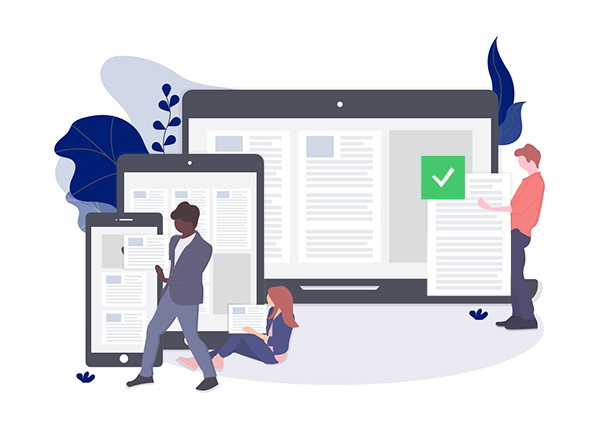
Ultimate resume guide:
How to make a great resume for an English teaching job.
It takes just 10 seconds for recruiters to decide if they’re going to close a resume or keep reading. In this guide, we’re going to show how you can make a resume that stands out.
If you’re planning on looking for a new teaching job, one of the most important things to do is to first make sure that your resume is up to scratch.
Given the fact that teaching positions often require very similar qualifications and have very similar job descriptions, most teaching resumés that recruiters receive are very similar to each other. This gives you an advantage! By creating a resumé that is attention-grabbing, showcases your personality, and includes details specific to the position you’re applying for, you can spark the interest of your future employer more easily.
Stop! Before doing anything listen to an actual ESL recruiter:
Many people rush into making a resume without considering who will be opening it and how they can best connect with this person. We can’t emphasize enough how important it is to understand how things work from the perspective of the recruiter. Luckily, our course tutor Heather used to teach English in China, and also worked in ESL recruitment before she joined World TESOL Academy.
 A day in the life of an ESL recruiter:
A day in the life of an ESL recruiter:
“When working as an ESL recruiter, I could receive up to one hundred resumes to sort through each day. With so many we were trained to open a resume and in 10 seconds make a judgment whether to keep reading or to move on to the next.
For resumes that passed the initial checks, we’d read through more carefully to see what position they might be most suitable for and the potential salary they might be able to demand. We’d then arrange a call with the teacher for an informal interview prior to matching them with a school.
Resumes that didn’t pass through the first checks would be put into either a ‘maybe’ or a ‘no’ folder. For ‘maybe’ resumes, we’d go through those again at the end of the day if there was time available, and would decide how to store their contact information in the database. The ‘no’ resumes would usually be those with largely irrelevant information, no picture or link to an introduction video, and either too much information (more than 3 pages) or too little (just a few lines on the page).
It’s very important to have a resume that immediately shouts ‘I’m the person you’re looking for!'”
.
This might sound quite harsh, but that’s the blunt reality of what happens when you send your resume to a recruiter, agency, or school. They’ll usually have a lot of other applications coming in, and will have limited time to look at each resume.
Now, let’s make a great teaching resume:
Keeping this information in mind, below we’ll start to look at how to write a great resume. We’ll do this in three stages. First, we’ll look at where to get a good resume template (forget about using Microsoft Word). Second, we’ll look at what content should go into the resume. Third, we’ll look at what to write and how to write it.
1. Where to get a good teaching resume template:
The first thing that many people do when starting a new resume is to open up Microsoft Office and write “NAME – Resume” at the top of the page. 20 years ago this might have been a good way to start your resume, but this is 2021, and there are much better ways to write a resume now.
There are numerous websites online with easy-to-use tools to help you make a high-quality and professional resume. These websites will usually charge money for some features/templates, but they’ll often have some free templates that could still give you a great resume.
Here are a few websites where you can find good teaching resumé templates:
When picking a resume template, it’s important to make sure that you consider the position you’re applying for. The type of template that select for an adult learner class would be quite different from the template that you’d use for a young learner class.
Templates for young learner jobs:
If you’re applying for a position to teach young learners, recruiters look for teachers that are attention-grabbing and fun, this is particularly applicable for online teachers. As such, you’ll want a bright and eye-catching resume template.
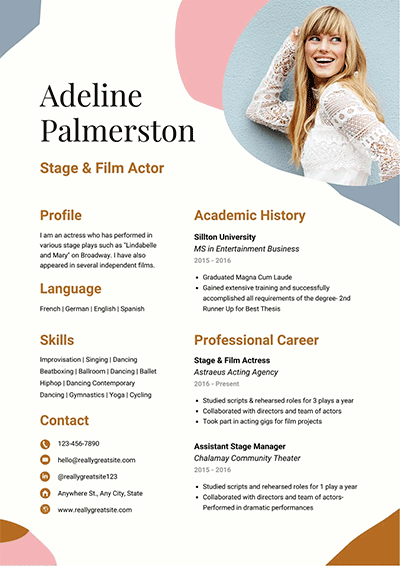
Template from Canva Resume: Click for the template.
Templates for adult learners:
If you’re applying for a position to teach adult learners, you’ll likely want something more professional. Ideally, it should still be engaging (it’s not like you’re applying for a position in government), but you’d want to scale things back slightly.
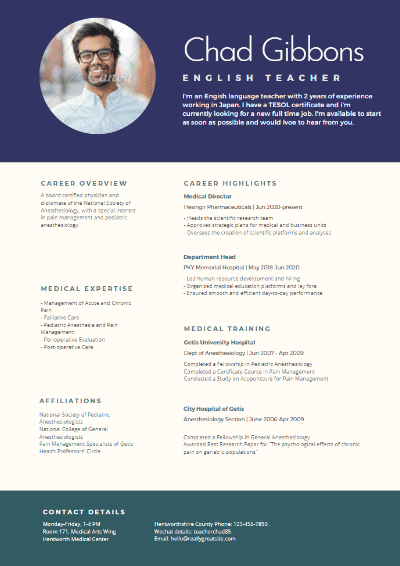
Template from Canva Resume: Click for the template.
You’ll need to browse through the various platforms and templates online and find a few templates that fit both the position you’re applying for and also match your personality. Whichever template you choose to go with, just make sure that it is no more than 2 pages in length. It’s a rule of thumb that if you can’t fit the information on two pages of A4, you’re writing too much (and recruiters likely won’t read to the third page of a resume).
2. How to take a good profile photo:
This is extremely important. For a general office job it wouldn’t be too important to include a photograph as you’ll want your qualifications and experience to do the talking for you. However, with teaching positions, your personality, charm, and charisma are all part of your value. The only way to show this on a piece of paper is to include a great photograph (and an introduction video – which we’ll discuss in the next point).
For young learner positions, you’ll want your photographs to be happy and smiling. It’s possible to get slightly more creative with these photos if you wish, especially when applying for positions with lower age groups. Your goal will be to signal to a recruiter that you’re friendly and able to quickly form bonds with students. For online positions teaching young learners, we strongly recommend posing with a prop and having a well-decorated teaching background behind you – signaling that you’re fully prepared and ready to start your lessons. For adult teaching positions, you’ll likely be teaching professionals, and so should dress smarter (a buttoned shirt), but still with a smile.

❌ This wouldn’t be a suitable photo as the person looks too uncomfortable.

✔️ This could be a great photo for middle & high schools, and perhaps even adult classes.

✔️ This is quite informal, but could be good for kindergartens & summer camps.

❌ This wouldn’t be a suitable photo for several reasons.
We can see ‘selfie’ arms holding the camera – which suggests the photo was hastily taken. The background is distracting, his expression doesn’t look welcoming, his hair is a bit messy, and his t-shirt looks wrinkled.

✔️ This would be great to use for a middle/high school, or for teaching adults.
The person looks comfortable and friendly, and is smartly-dressed without being too formal (no tie needed). He isn’t standing against a plain wall, but it’s ok as the background isn’t too distracting.

❌ This wouldn’t be suitable as her expression looks stern, and the image is too dim.
Tattoos are also considered taboo in some cultures, so it would be best to cover these and after your interview ask about the school’s policy – reassuring them that you’d be able to conceal your tattoos while working (if required).

✔️ This might be too formal for young learner positions, but could be great for high school or adult learner classes.
It’s professional but friendly and shows the teacher’s personality. However, you should remove the phone from your hand – schools don’t want to see teachers looking at their phones.
If possible, it could be a good investment to hire a photographer to take a few high-quality, professional pictures of you. Alternatively, you could first start with asking a friend if they have an hour spare to help you take some photographs – aim for around 50 photos of different poses, taken in a well-lit room. With such a large number there’s a good chance that you’ll have one or two usable ones. Your photo should convey your personality, so make sure to smile and look friendly and approachable. Your energy can be felt through the photo.
3. What to write in your resume:
Before writing your resume you should spend some time collecting all of the relevant information about yourself. It’s good to do this before actually writing it into the resume itself to make sure that you have everything planned out beforehand. Below we’ll explore several vital sections that you should include in your teaching resumé.
• A concise objective:
At the top of your resumé, you should write a few sentences about your overall qualifications and the reason why you’re applying for this specific job. This should be very specific to the school and position you’re applying for, so make sure to research this thoroughly. Your objective should be a quick, 3-4 sentences summary of what makes you a great candidate for this teaching position.
Example objective:
“I’m Jessie, an English language teacher from Australia. I love working with children and have spent around two years teaching English to young learners online. Now that I have my TESOL certificate, and have finished my degree, i’m looking for a position to teach English at a kindergarten in Korea. I have all of my documents ready, and hope to start teaching by the end of this summer.”
In just a few sentences, you’ll be able to convey a huge amount of information to the recruiter. The same information should be included in the details of your resume, but with this short objective at the start, you’re able to frame your experience and personality in a way that matches what the recruiter would like to see.
• An introduction video:
This is something that 99% of people miss out on when making a resume for a teaching job. Just underneath your objective is the perfect place to include a link to an introduction video. As most resumes are viewed digitally nowadays, it’s quite easy to include such a link. In your video you’ll be able to mention similar things to your objective, summarise some more information from your resume, and perhaps include some of your likes and interests. By doing this, you’ll also be able to show off your language skills, personality, and confidence. This is something that could be especially useful for non-native teachers as you’ll be able to show the school/recruiter just how good your language skills are.
Pro-tip: YouTube allows you to privately upload videos and get a direct link to them, however, keep in mind YouTube isn’t available in all countries. China, for example, blocks access to YouTube as the government isn’t able to moderate the content on it. This means that if you’re applying for a job in China, you would want to host your video on a Chinese site instead (such as YouKu).
• Relevant experience:
We can’t emphasize this enough – only focus on relevant work experience.
This is something that many people make mistakes with. When writing their resumes, they’ll add every possible piece of work experience they’ve ever had, believing that more is better. This is absolutely not the case when it comes to teaching positions. Schools are looking for teaching experience or transferable skills that could be applied to teaching scenarios.
If you have 7 years of experience managing a team of engineers, you’ll probably have enough information to fill a whole page about your projects, responsibilities, and achievements. But a school simply wouldn’t be interested in this. They would be more interested to know that you had once spent a summer tutoring your neighbor’s kid in the subjects of maths and history. By adding volumes of information about your engineering expertise, you’ll actually be reducing your chances of getting hired, as the school would be looking to hire a teacher – not an engineer.
Take a look at the examples below:
Engineering Project Manager – Engineering Firm
- Led a team 0f 20 engineers to develop steel frame foundations
- Train new employees on best practices for drainage equipment
- Work with AutoCAD design software
- Operate construction machinery
- Health and safety training management
- Responsible for filing yearly tax reports
- Hosted meeting with corporate clients
History and Music Tutor – Summer position
- Helped a neighbor’s child with their school history and music studies.
Project Manager – Engineering Firm
- Led a team 0f 20 people in various positions
- Provide training for new colleagues
- Underwent health and safety training
History and Music Tutor – Summer position
- I privately tutored a young learner in history and music studies.
- Identified student goals and set achievable targets.
- Devised relevant, fun, and effective lesson plans.
- Maintained student motivation through a reward system.
- Practised reading, writing, and exam-taking skills
- Relayed actionable feedback to parents.
This should give you an idea of how to maximize relevant details and minimize irrelevant ones.
What if you don’t have any previous teaching experience? You should read our guide here – How to get a job without previous experience – and also put more emphasis on your education and skills.
• Prior education:
This is one of the most basic sections in every resumé. You should include your most important education starting with your highest achievements first. It’s common to find that teaching positions require a bachelor’s degree. If you have one then you should certainly make sure that it’s clearly mentioned here. If you’re currently enrolled in a degree course but haven’t finished, you can list it here with your expected graduation date. If you haven’t completed a degree, and aren’t on a degree course, don’t worry. There are still lots of opportunities out there for teachers without degrees. It could require focusing on some specific areas, and preparing more thoroughly, but it’s absolutely still possible to secure both overseas and online work without a degree.
• Teaching certifications:
Most English teaching positions require their teachers to have a teaching certificate. You might find some jobs that say they’ll provide a teaching certificate for you, but such adverts should set off alarm bells (they’ll most likely be providing very low-quality courses and placing you in schools that you probably wouldn’t want to work in).
If you have completed an accredited teaching course (such as a TESOL/TEFL course) and have your certificate, you should make sure to note it clearly on your resumé. You can also add a few details about how many hours of training you went through and the date of completion. It is also recommendable to include the name of the center where you took the course and its accreditations to build up your credibility.
Getting your TESOL/TEFL certificate:
If you haven’t yet enrolled in an accredited TESOL/TEFL course you can do so with the button below. Our 120-hour course can be completed online at your own pace, and gives you a dual-accredited certificate upon completion:
.
• Relevant skills:
Including your skills in your teaching resumé will be particularly important if you don’t have any previous teaching experience. This is the section where you can show off what you can bring to the table as a new teacher in the school you’re applying to.
Some of the skills you can mention are things that you’ll have learned from your teacher training courses (TESOL/TEFL, or TEYL). These could be things like classroom management, lesson planning, devising reward systems etc.
You could also list other skills that you’ve developed through previous work/life experiences – just make sure they’re relevant for this position. Skills surrounding teaching/learning, creativity/design, language abilities, interpersonal skills, etc. could all be useful to mention. If you’re able to use Photoshop or do video editing, this could also be useful to mention as schools might recognize your potential to help with creating class materials.
Note: Many resume templates come with graphs or bars where you can mark your various skills out of 10, for example: “Lesson planning skills: 8/10”. We strongly advise against using such icons/graphs. While they might look interesting and modern, they don’t actually help you when applying for jobs. It’s much better to list skills without personal rankings and then during an interview you could explain what you’re most comfortable with.
• Contactable references:
If you have some previous teaching experience, for example as a tutor, get in touch with your previous students and ask them for a short reference letter. You can also ask them to be your referees and ask for permission to include their e-mail address or phone number in your resumé. If you worked in a school before, contact your previous employer or your teacher colleagues from your last place of employment and ask them if they can write a reference letter for you.
Just make sure that if you do add references, you have up-to-date contact details for them, and that they’ve given consent to be contacted.
3. What to do next:
After you’ve made a great resume, you can save this as a base template. Then, when you find a job that you’d like to apply for, you can look for additional ways to adjust a copy of this template so that it better fits this specific position or school. For example, if the school is advertising for a part-time teacher to work on Tuesdays/Wednesdays/Fridays, then you should make sure to mention that in your objective. Make sure to read the description of the job very carefully! Sometimes, you’ll need to read between the lines and figure out what type of teacher this particular school or employer is looking for.
If you follow all of the advice in this guide you should end up with a great resume that can help to increase your chances of getting hired. Just make sure to save it as a .PDF (not .DOC), send it over to the school, and cross your fingers!

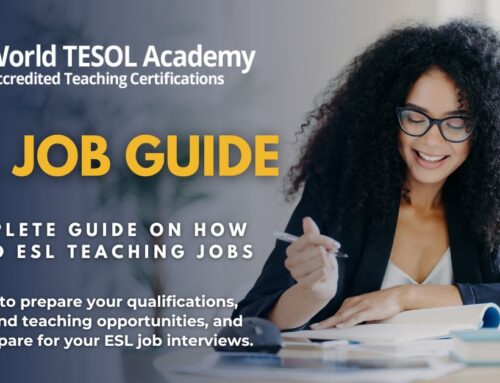
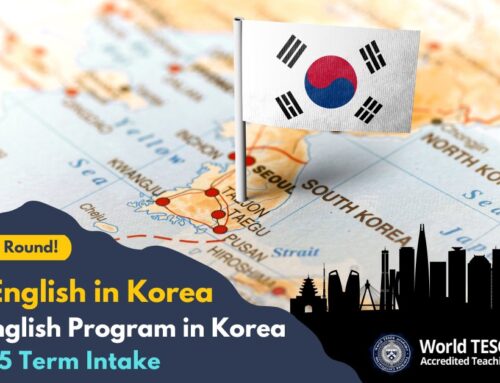

great tıps, much apprecıated.
This came in handy, I’m updating my CV and there are a few tips I’m very thankful for. Wish you all the best!
Thanks for the information. I am very grateful for the guide.
Amazing information, I’m updating my CV now.
Thank you for this informative piece!… It’s worth the time
Thank you for the useful tips, I came across this article at the right time. I am updating my esl cv for conventional business English.
This blog was very helpful and informative. Thank you!